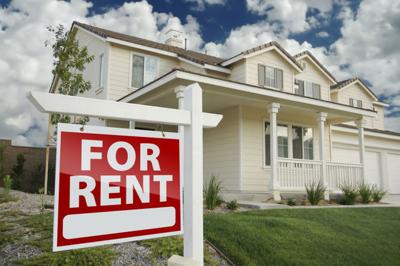Competing policies and economic forces are keeping apartment rental prices stable, while single-family home rentals see sharper increases due to strong demand.
Housing development has increased over the last several years in response to major policy shifts at the state and local levels, though the vast majority of construction on the Peninsula comprises multi-family buildings, such as apartments, especially those with two bedrooms or less. The added supply has kept rent increases for such units relatively modest. In the county’s largest cities — Daly City, San Mateo and Redwood City — apartment and condo rental prices increased by less than 1% year over year, according to Zillow data.
“The whole reason we’re building is to help stabilize the price, and it's actually happening,” said Robert Pedro, president of Signature Realty. “We’re seeing prices of those units stabilize. They’re not going out of control.”
Michael Pierce, president of Prodesse Property Group, said occupancy rates, and thus prices, could also be tempered by the impending H-1B visa cost increases, especially in an area reliant on visa-heavy industries.
“A lot of people who are H-1B visa holders are renters, because they don't know if they're going to be here permanently,” he said.
Recent California Employment Development Department data show that the San Mateo and San Francisco area saw a year-over-year net decrease of 2,900 jobs between August 2024 and August 2025, with the drops impacting sectors ranging from federal and state government to professional, scientific and technical services.
Such changes in the labor market could mean more people moving out of the area, decreasing demand and lowering occupancy rates. Pierce tracks tenants’ reasons for moving out of his properties— such as purchasing a home or relocating to another area — and said he is starting to see more instances of move-outs due to deportation as well.
However, other influential forces may signal potential rent increases in the apartment and condominium market in the near future. Despite a generally upward trend in housing development over the last six years, there have been more recent delays in construction due to difficult lending conditions for developers over the last couple years. Many development applications approved in 2022 and 2023 have yet to receive financing and therefore break ground. Many Peninsula cities have had to extend developers’ entitlement approvals beyond the typically allotted one- to two-year period, usually so they could have more time to secure financing for their projects. That delay could lead to a strain on supply in the near future, impacting prices.
“The Bay Area overall is still undersupplied relative to demand, and when new building stalls, the imbalance widens,” said Orphe Divounguy, senior economist at Zillow, via email. “Without more new units, rents can climb faster than the regional average, particularly in markets like Redwood City and San Mateo that already face land and zoning constraints.”
Less-frequent home purchasing could also lead to more pressure on the rental market and subsequently drive up costs. Pierce said occupancy rates at his properties remain high, in large part because less people are moving out to purchase homes. Around 2017 and 2018, he said the percentage of people moving out to buy a home ranged from 11% at the low end to 15% at the high end.
“Now, in 2022 it was 7.5% and in 2023, it was 6.4%. This year, it just tipped up to 7.4%,” Pierce said. “The fact that there are so many fewer people buying homes is keeping occupancy higher.”
Single-family homes saw the biggest year-over-year increases in rent. Experts attribute the rising cost to limited supply and ever-increasing demand.
“That scarcity is why rent growth for houses has outpaced apartments in many Peninsula cities this year,” Divounguy said. “Put simply, homes are the pressure cooker of the rental market, while apartments remain more balanced.”
The increased apartment supply often attracts more younger demographics who eventually seek out nearby houses, Pedro said, citing Redwood City as an example of multi-family development in the downtown corridor leading to increased demand, and therefore prices, in the adjacent single-family home neighborhoods.
“By building all the housing in downtown corridor, you’re attracting people to Redwood City and then they decide to set down serious roots and buy a home,” Pedro said. “What those apartment units do is also build the future demand for the housing, and I think that’s what we’re seeing.”
While multi-family units are often seen as the most financially feasible type of project for developers, Pedro said that could change soon, especially since many of the current single-family homes on the Peninsula were built more than 60 years ago and offer a similar number of bedrooms and bathrooms as a modernized condominium or townhome.
“The prices are hitting the point now where it’s getting the attention of builders, and they’re saying, ‘how can we build in the single-family home market?’” Pedro said.


























(1) comment
I’m a little confused…the headline says “House rental prices up” yet the article doesn’t report what house rental prices have risen to. In fact, no rental dollar amounts are discussed nor their percentage increase. Perhaps the headline should reflect “More single-family homes on the way?”
Welcome to the discussion.
Log In
Keep the discussion civilized. Absolutely NO personal attacks or insults directed toward writers, nor others who make comments.
Keep it clean. Please avoid obscene, vulgar, lewd, racist or sexually-oriented language.
Don't threaten. Threats of harming another person will not be tolerated.
Be truthful. Don't knowingly lie about anyone or anything.
Be proactive. Use the 'Report' link on each comment to let us know of abusive posts.
PLEASE TURN OFF YOUR CAPS LOCK.
Anyone violating these rules will be issued a warning. After the warning, comment privileges can be revoked.